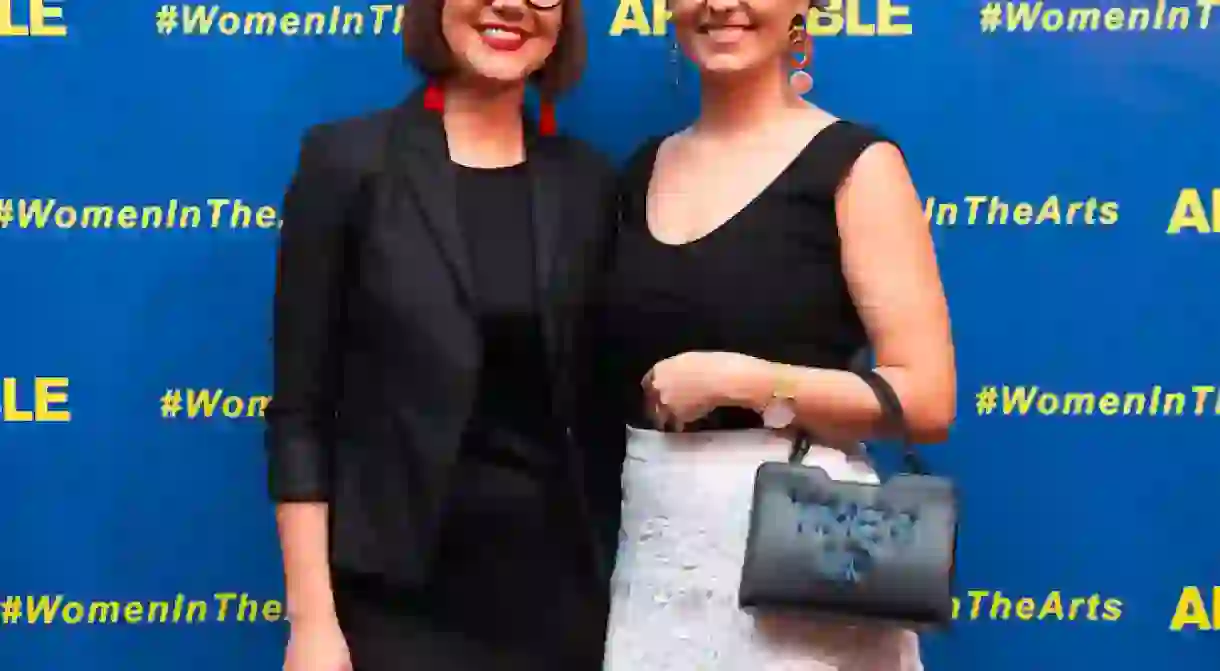ArtTable Honors Outstanding American Women in the Arts

ArtTable, a nonprofit organization dedicated to championing women professionals in the arts, celebrated its 25th anniversary last week with its annual gala. In her keynote speech, Dr. Johnetta B. Cole spoke about the lack of female representation across the art world and what can be done to change it.
According to the National Endowment for the Arts, 46 percent of artists today are women, and yet they earn, on average, 81¢ for every dollar made by male artists. As a result, women artists earn around $20,000 less than their male counterparts every year.
A post shared by ArtTable (@arttableinc) on Apr 16, 2018 at 2:28pm PDT
This was a key concern for Dr. Johnetta B. Cole during her keynote speech. Cole, who is director of the Smithsonian National Museum of African Art and president emerita of Spelman College and Bennett College, spoke ardently about diversity and its importance to a crowd gathered in honor of the achievements of Marian Goodman and the Marian Goodman Gallery.
A post shared by Marian Goodman Gallery (@mariangoodmangallery) on Apr 3, 2018 at 7:23am PDT
Goodman rose to prominence in the New York art world during the 1970s and ’80s, when there were few women helming art galleries, representing artists, and dealing art. Since then, she’s built a reputation as an international powerhouse, bringing such artists like Joseph Beuys, Marcel Broodthaers, Blinky Palermo, and Gerhard Richter to an American audience.
A post shared by Marian Goodman Gallery (@mariangoodmangallery) on Apr 4, 2018 at 11:15am PDT
ArtTable presented Goodman with the Distinguished Service to the Visual Arts Award, presented by artist Julie Mehretu. In addition, deputy director and chief curator of the California African American Museum, Naima J. Keith,was given the 2018 New Leadership Award. Among such celebratory fanfare, the call for change resounded around the venue.

In her keynote address, Cole spoke about the root of the gender problem, calling for “greater attention to diversity, equity, and inclusion in museums.”
According a 2012 article by artist Judy Chicago published in The Guardian, work by women artists makes up only three to five percent of major permanent museum collections in the U.S. and Europe.
Statistics demonstrate that art’s gender wage gap is largely due to this lack of inclusion, as well as the fact that women stagger behind men in galleries, where they account for only 30 percent of artists in the commercial sphere, and at auction, where the highest concentration of art wealth lives. A 2017 study published in the Social Science Research Network indicated that there are no women in the top 0.03 percent of the auction market, where 41 percent of the profit lies. Overall, 96 percent of artworks sold at auction are by male artists, a statistic Cole cited in her keynote speech.
The results of this inequality across the board can be seen in an alarming statistic from artnet News, which revealed that only eight women made the list of the 100 highest-selling artists by overall sale volume between 2012 and 2016.

In order to break the glass ceiling of the art world, Cole argued that “there will be no more credit for predicting the rain, it’s time to build the arc.” And this so-called “Noah Principle” cannot, Cole insisted, be just metaphorical. The speaker called for the following four actionable steps in order to level the playing field for women:
Women must “seriously own problems,” Cole said. Here, she referenced a James Baldwin quote: “Not everything faced can be changed, but nothing can be changed that isn’t faced.”
Secondly, Cole asked the audience to “support existing programs to address systems of inequality,” naming specifically, the Walton Foundation, Mellon Foundation, and Ford Foundation.
Thirdly, the Smithsonian director implored the industry to undergo “serious training in unconscious bias.”
And finally, she added that, “Each one of us needs to become personally engaged in changing the diversity composition.”
As Cole wrapped her address, the crowd roared with applause and, despite the hard glass ceiling that is yet to break, the room filled with optimism. Through relentless sisterhood and a spirit of empowered resistance, ArtTable’s event ended on a celebratory note, recognizing the strides women have made in the arts, and what is yet to come.













